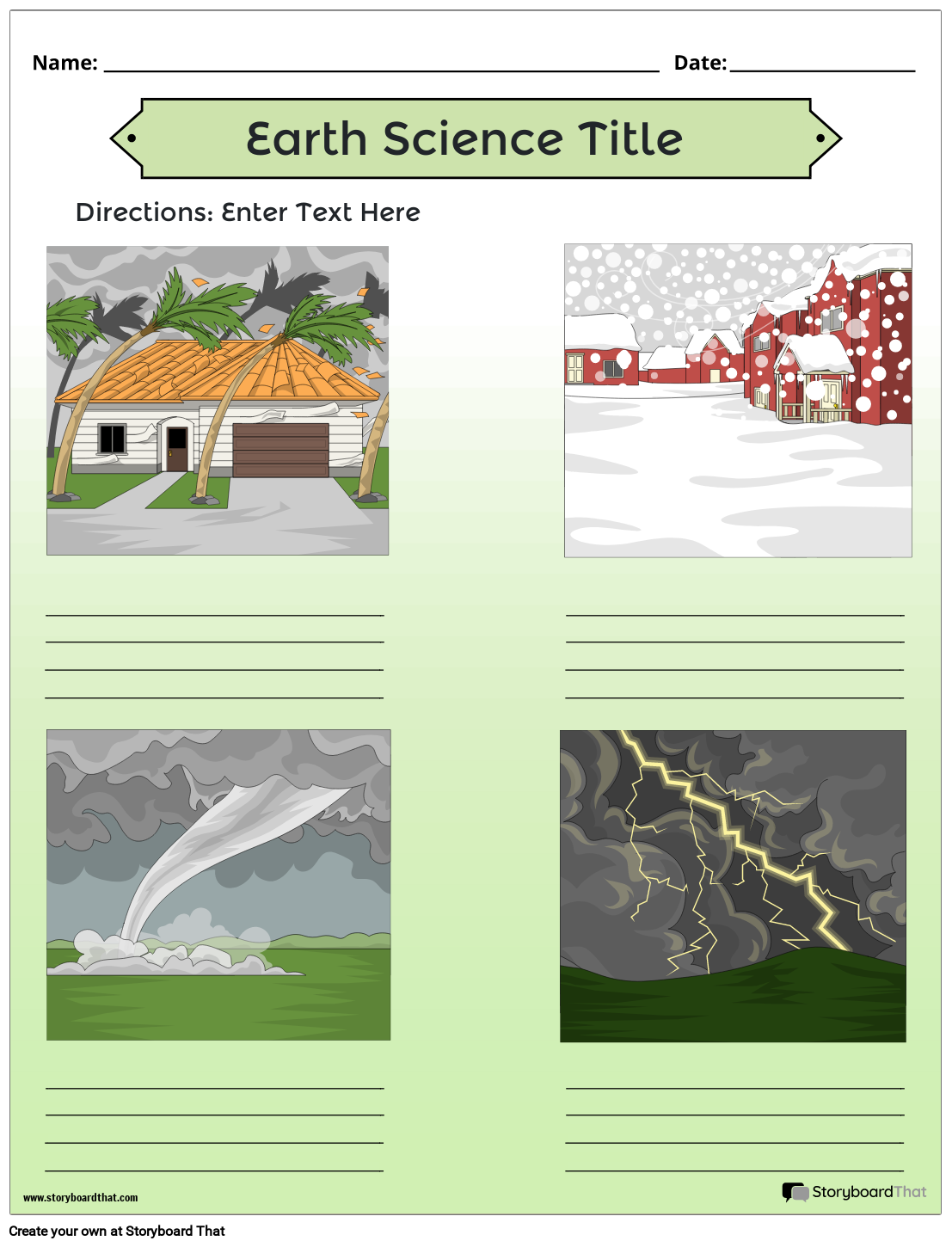Earth Science Worksheets

Enhancing Earth Science Education: The Power of Earth Science Worksheets
Earth science worksheets are versatile, accessible, and effective tools for teaching a wide range of Earth-related concepts. They engage students in hands-on learning, making complex topics comprehensible and enjoyable. When using earth science worksheets, it's important to strike a balance between structured activities and opportunities for open-ended exploration. Tailor the use of worksheets to the specific needs and abilities of your students, and don't hesitate to adapt and create your own worksheets to align with your curriculum.
Earth Science Worksheet Ideas
- Exploring Earth's Biomes (Planet Earth Worksheets): In this activity, students receive a worksheet that focuses on different Earth biomes (e.g., rainforests, deserts, tundras) and their unique characteristics. They are tasked with identifying and labeling these biomes on a world map provided on the worksheet. The worksheet can also include questions about the flora and fauna found in each biome.
- Earth's Layers and the Rock Cycle (Introduction to Earth Science Worksheets): This worksheet introduces middle school students to the fundamental concepts of Earth science. It includes diagrams of Earth's layers and the rock cycle, along with explanatory text. Students are asked to label the layers and describe the stages of the rock cycle. Earth science worksheets for middle school students should be designed to make complex concepts accessible and engaging, fostering a deeper understanding of our planet and the natural world.
- Weather and Climate Quiz (Earth Science Worksheets with Answer Key): Provide students with a worksheet containing questions related to weather and climate. Alongside it, include an answer key for immediate self-assessment. Students can independently answer questions about weather patterns, climate zones, and the factors influencing climate.
- Regents Earth Science Practice Exam (Earth Science Regents Review Worksheets): Offer a comprehensive worksheet designed as a practice Regents exam. The worksheet includes multiple-choice questions, short-answer questions, and essay prompts covering various Earth science topics. Provide a scoring rubric or answer key for students to assess their performance.
- Seasons on Earth (Earth in Space Worksheet): Give students a worksheet that explores the Earth's position in space and its impact on seasons. The worksheet can include diagrams illustrating the tilt of the Earth, the equator, and the solstices. Students are then tasked with explaining how these factors contribute to the changing seasons.
- Identifying Landforms (Geology Worksheets): Provide a worksheet with images of various landforms such as mountains, valleys, plateaus, and canyons. Students are asked to match each image with the corresponding landform name and provide a brief description of how these landforms are formed.
These activity overview ideas incorporate the specified keywords and are designed to engage students while reinforcing key Earth science concepts. They can be adapted to suit different grade levels and teaching objectives.
Steps to Make a Earth Science Worksheet
- Select a Specific Earth Science Topic: Begin by choosing a focused Earth science topic that aligns with your curriculum or lesson objectives. This could be anything from landforms and weather patterns to celestial bodies or geological processes.
- Define Learning Objectives: Clearly outline the learning objectives you want to achieve with the worksheet. What should students understand or be able to do after completing the worksheet? This step will guide the content and structure of your worksheet.
- Design Worksheet Content: Create a variety of engaging content that reinforces the chosen topic and learning objectives. This content can include multiple-choice questions, fill-in-the-blank exercises, diagrams, data analysis tasks, or short-answer questions.
- Incorporate Visuals and Diagrams: Enhance the worksheet with visuals such as images, diagrams, charts, or maps to aid comprehension and make the content more appealing and accessible to students.
- Provide Clear Instructions: Write clear and concise instructions for each section of the worksheet. Ensure that students understand what is expected of them, whether it's labeling parts of a diagram or analyzing data from a graph.
- Include an Answer Key (Optional): If desired, create an answer key that provides correct responses to the worksheet exercises. An answer key is particularly helpful for self-assessment and grading purposes.
Storyboard That Resources and Free Printables
Unlock your students' potential with our interactive storyboard platform. Explore a world of educational resources, including free earth science worksheets, Regents earth science worksheets, free geology worksheets, and other printable earth science materials.
- Erosion, Weathering, and Deposition Worksheets
- Layers of the Earth Worksheets
- Rocks and Minerals Worksheets
- Weather Worksheets
- Waves Worksheets
- Water Cycle Worksheets
- The Moon Worksheets
- Volcano Worksheets
How to Make an Earth Science Worksheet
Choose One of the Premade Templates
We have lots of templates to choose from. Take a look at our example for inspiration!


